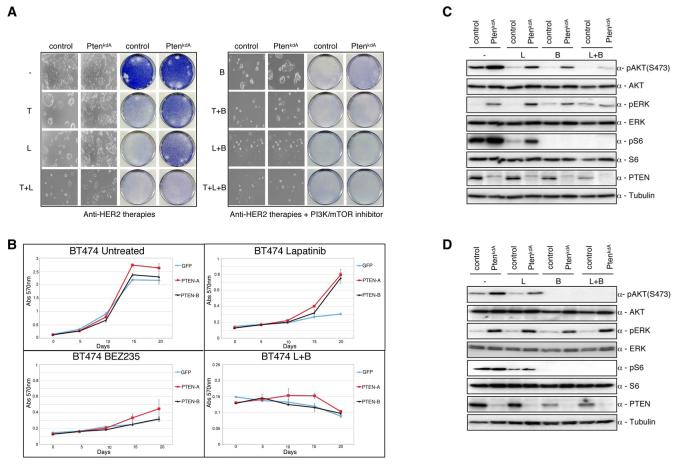Fig. 5.
Lapatinib and NVP-BEZ235 suppress the PI3K-AKT-mTOR axis driven by loss-of-function PTEN mutations. When required cells were either treated with trastuzumab (5 ug/ml), or lapatinib (27 nM), or NVP-BEZ235 (15nM) unless otherwise stated. A) Colony formation assay in BT474 cells infected with either PTENkdA or relevant controls. Infected cells were treated with trastuzumab, or lapatinib, or NVP-BEZ235, or in combination. After 4 weeks cells were photographed and stained with crystal violet. B).Growth curves of stably infected PTEN knockdown BT474 cells (PTENkdA or PTENkdB) treated for 3 weeks with lapatinib or NVP-BEZ235, or both. Cell numbers were quantified as described in Experimental Procedures. Growth curves were performed in triplicate with the error bars depicting the mean ± s.d. C) Western blot analysis of stably infected BT474 cells with shRNA PTENkdA vector treated overnight with lapatinib (27 nM), or NVP-BEZ235 (100nM) or both. Whole cell extracts were analyzed with the indicated antibodies. D) Western blot analysis of stably infected BT474 cells with shRNA PTENkdA vector treated overnight with lapatinib (27 nM), or NVP-BEZ235 (500nM) or both. Whole cell extracts were analyzed with the indicated antibodies.

